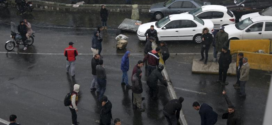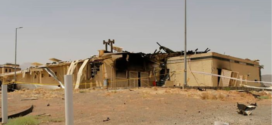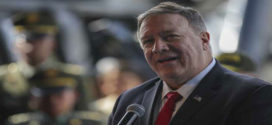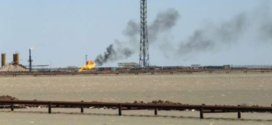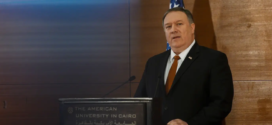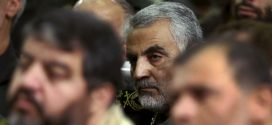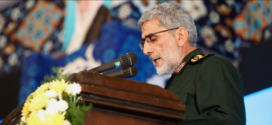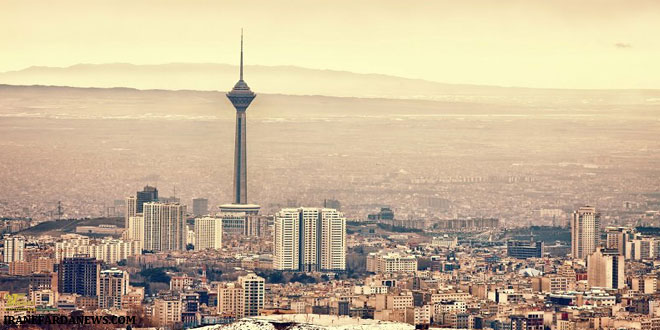
By: Bonds & Loans
Iran’s Parliament approved new laws that would allow its Oil Ministry to tap into the local and international bond markets for billions of dollars, mostly to finance a growing pipeline of projects- and to reawaken the country’s capital markets ambitions. Emerging market investors and observers remain sceptical of the sovereign’s ability to move past a precarious recovery or its increasingly tenuous relationship with the Trump Administration.
Within the first few weeks of the year, Iran’s s integration committee authorized the Ministry of Petroleum to sell about US$1.9bn in fixed rate Islamic bonds, colloquially known as participation bonds, in order to invest in development of joint oil and gas fields including South Pars, a massive offshore natural gas condensate field being developed that sits on the border between Qatar and Iran.
In February, the country’s parliament approved a budget clause that would enable the ministry to issue up to US$9.2bn in local and hard currency bonds through 2018. The government is authorised to sell the bonds from 21 March of this year.
The move has once again stirred talk of the country’s global capital markets ambitions, which last peaked shortly after sanctions crippling the Iranian economy were lifted following implementation of the Joint Comprehensive Plan of Action (JCPOA), referred to as the Iran nuclear deal.
But with US financial sanctions – including those that forbid companies (including banks) with an onshore presence in the country from doing business with Iran – still in place, EM investors are sceptical of any deal materialising in the near term.
“If they do anything it will be in euros, and they are likely to struggle in building a syndicate,” explained Jan Dehn, who leads the emerging market research team at Ashmore Group. “Unfortunately, the lawyers are going to have the final word on this one. It is not just about complying with the letter of the law, but investors must also take account of the fluid political environment in the UK, and especially the US.”
“On a fundamentals basis, however, I would already be investing. I like the credit,” he added.
Kevin Daly, an emerging market portfolio manager at Aberdeen Asset Management, agrees – but stressed that significant limitations, including the absence of well-recognised rating agencies, still prevent traditional EM fixed income investors from making meaningful forays into the market.
“This is a country that would initially be rated no higher than a low ‘BB’, it would be sub investment grade because of its recent history for sure, but if you looked at its reserves and low debt levels it wouldn’t be a stretch to say this has investment grade characteristics. It would also carry very low default risk,” Daly said.
“There’s an opportunity there for anyone able to get in and invest early given where yields are.”
Perhaps unsurprisingly, that opportunity has – so far – largely been exploited by the trading arms of commodities companies, looking to bank on the country’s return to global oil and gas markets. In January this year, it was revealed that Vitol, the world’s largest energy commodities trading firm, struck a deal with National Iranian Oil Company (NIOC) that saw the former extend the latter a euro-denominated pre-export finance loan worth roughly US$1bn and backed by future exports of refined products. In mid-2016 rumours swirled around a similar deal materialising between NIOC and Glencore, another large commodity trader, but sources suggest a deal stalled due to disagreements over its terms.
Bottlenecks and Banking Sector Woes
The country’s recovery since the sanctions’ removal has been nothing short of impressive, bolstered by significant trade deals with a number of large global firms and fiscal prudence. Its fundamentals paint something of a mixed picture. Despite maintaining single-digit inflation and fiscal prudence, the non-oil sector continues to lag, while the banking sector is still stuck decades in the past.
Production and exports rebounded quickly in 2016 to pre-sanction levels, helping cushion the impact of low global oil prices, and increased activity in agriculture, auto production, trade and transport services has led the recovery in growth in the non-oil sector, the IMF said following its most recent consultation with the country’s top fiscal and monetary policy experts.
Growth in the oil sector reached 7.4% in the first half of 2016, a significant rebound from pre-2015 levels, but the non-oil economy grew just 0.9% during the same period. Real GDP growth for the year reached 6.6% overall, but is expected to be cut in half as a result of steep oil export cuts it agreed to under a wide-reaching deal with OPEC and non-OPEC producers. Non-oil GDP growth is expected to grow by 2.6%, driven largely by manufacturing and agriculture. If the country’s Central Bank keeps downward pressure on inflation – analysts expect the Iranian riyal to appreciate up to 10% this year against the US dollar – the economy could see a continued rise in imports, albeit at the expense of exports.
The credit market in Iran expanded significantly last year, with private sector credit jumping 30.3% over the previous year, which saw just 16.7% growth.
The Iran Fara Bourse (IFB), the country’s leading OTC securities exchange, lists over IRR100tn (approx. US$2.8bn) worth of fresh Islamic Treasury Bills sold since the JCPOA agreement came into force. In an interview with local press, the Bourse’s CEO Amir Hamouni said late last year that demand for the T-Bills outstrips supply by a factor of ten. The government issued the bulk of Islamic T-Bills – about US$2.4bn worth – sold on the IFB in 2016, and could look to issue fresh sukuk to finance up to 10% of the budget deficit in 2017.
But increased capital markets activity hasn’t stemmed overreliance on the country’s banks, which analysts argue has led to a build-up of bad credit in the banking system, and that the country still needs to implement a raft of fresh reforms to sustain the credit sector’s growth.
The IMF recommended enhanced supervision of distressed banks, an asset quality review to identify viable banks that warrant recapitalization, and for nonviable banks to be resolved.
It encouraged the country’s authorities to support recapitalization of public banks with measures that improve their commercial viability, and wind down directed credit schemes. It also wants the country to adopt a more robust medium-term fiscal framework that would among other things see it use increasing oil revenues to help recapitalise some of the its struggling banks.
The Washington-based lender also championed some of the progress the country has already made, including the forthcoming passage of a new banking bill that would give the Central Bank of Iran (CBI) the supervisory powers to implement some of these reforms, and a new bill to modernize the monetary policy framework and bolster the CBI’s operational independence.
Alireza Hojjatnia, Junior Vice President of International Affairs at Tehran-based Agah Group, a financial advisory and brokerage, said the country is making progress on the banking reform front, but financial institutions still have a massive learning curve to overcome – a necessary step in opening up ties with the world’s banks.
“The undeniable fact is that despite some progress on the regulatory front, Iranian banks are still considered quite small, and have historically struggled to embrace concepts and practices that are mainstays in global financial markets – particularly Know-Your-Customer and anti-money laundering controls,” Hojjatnia said. “Years of solitude will take time to overcome.”
But Hojjatnia also said the evolution of the domestic credit market was one of the most promising developments of last year, and could be used as a springboard to gain more trust with international investors – a crucial step in its capital markets journey.
“You could see the sovereign deepen the market by issuing euro-denominated sukuk. It could go a long way to generating more trust among foreign investors.”
Capital markets reforms are also crucial. Currently, secondary trading of participation bonds, murabaha sukuk and Islamic treasury bills can only be conducted on the Tehran Stock Exchange and the OTC market, creating high transaction costs for local and foreign investors alike. This would need to change.
Politics Could Derail the Country’s Prospects
Iran’s foreign investment laws are relatively favourable for global investors. Both the Foreign Investment Promotion and Protection Act (FIPPA) and many bilateral treaties grant important protections against expropriation and discrimination, and guarantee repatriation of capital and profits. On the equities front, the country entitles foreign investor license holders to own up to 100% of domestic entities, and extends generous tax breaks to firms that keep at least 30% of their supply chains within Iran. FDI more than doubled last year, generating tens of billions of dollars in fresh inflows.
But that progress – which it hopes will help it re-join the international capital markets for the first time since 1979 – could be halted by banking sector weakness, structural bottlenecks, and a lack of willingness on the part of large foreign institutions to do business there, something exacerbated by the current political environment.
During his presidential campaign, Donald Trump repeatedly suggested he would strike a less conciliatory tone in dealing with Iran than his predecessor, an ominous sign of increasing tensions between the two nations.
Making matters worse, Iran’s Revolutionary Guards Corps in January conducted a series of ballistic missile tests, seemingly in a show of defiance against UN Security Resolution 2231, which underpins the nuclear agreement. This led the US Treasury to introduce a fresh round of sanctions – more symbolic than anything – and then-national security adviser Mike Flynn to claim Iran was “officially being put on notice.”
President Rouhani has, impressively, managed to exercise restraint. But with fresh presidential elections just around the corner, he may not be able to continue to balance his more moderate, pragmatic sympathies with those of the country’s conservative hardliners, who want to see Iran stand up to the US.
Neither a mercurial Trump nor an electorally pressured Rouhani are good for global investors, with further escalation between the two likely to hinder Iran’s efforts to re-integrate with global markets.
“The sanctions are the line in the sand for us, and the eroding relationship between the US and Iran has done little to allay any concerns,” Daly concluded.
 khalijefars News, Blogs, Art and Community
khalijefars News, Blogs, Art and Community
